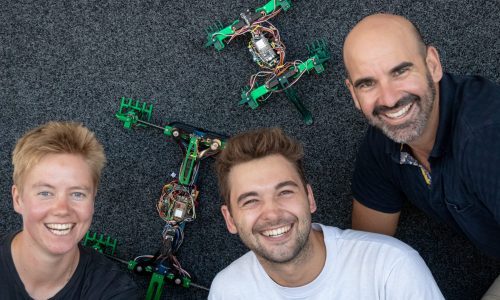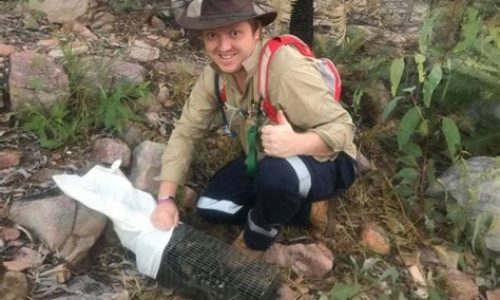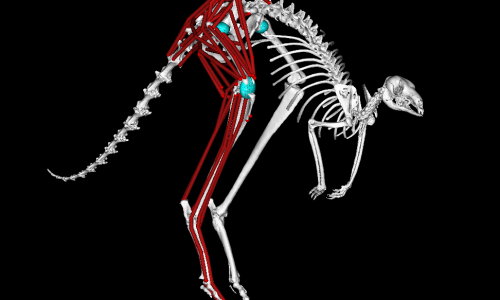About our Biomechanics and Biorobotics Lab
In our animal biomechanics and biorobotics lab, we are interested in the relationship between form, function and ecology of living and extinct animals. Our projects focus on the different ways that biomechanics of movement can limit the pathways available for evolution.
Australia offers a variety of unique animal species and many of the iconic ones are study species in our lab. From Biomechanics of Kangaroo hopping using computer simulations over studying invasive versus native species comparing their locomotion to determine potential advantages in ecological niches on to equipping the large perentie lizards in the big red deserts of Australia with GPS and accelerometers to study their 24/7 behaviors and roaming.
Not only the variety of study species is large in our lab, so are the methods we use.
Whether it is the use of drones to film animals from above, or the use of high-speed cameras to get a high-resolution video of the locomotor performance of the animal in 2D and 3D. Or whether it is the use of physical robotic models or computational muscle-skeletal modelling. Whether it is tracing animals’ movements with accelerometers and using machine learning to predict their behaviour or tracking the movements using markerless pose-estimation based on deep learning to study detailed kinematics. If kinematics alone is not enough – don’t worry! We do also record force data of animals running, climbing and hopping to investigate their movement dynamics.
Interested in joining our lab?
NEWS

Bio-inspired climbing robots. We are now celebrating the 5th generation
The research on lizard climbing locomotion using robotics started back in 2017. Several generations of students and robots were necessary to get to this point. Gen 4 made worldwide news with our published papers. Now the 5th generation climbs even better ! Check out the video below.

Northern Quoll behavioural study 'Sex and no sleep' made the world wide news
Josh Gaschk recently published his study on Northern Quoll behaviour and the results he found were stunning. Not surprising that they got world-wide attention! Using accelerometers and Machine Learning he could investigate what Quolls do throughout the entire day and night without watching.

How do kangaroos hop? This musco-skeletal computer model will tell us soon!
We have just been awarded an ARC discovery grant to solve the riddle of why kangaroos hop. Lauren Thornton is currently working on hopping simulations with a musko-skeletal kangaroo model, while Jasmin Annett will explore how kangaroos use this gait in their natural habitat using accelerometers
JOIN OUR LAB!
We have students from different countries and different stages during their studies joining us! We always look for volunteers who are keen to experience some animal research and help with data analysis, SRP and honour students to do a research project with us or if this already sounds so amazing that you want to stay even longer, reach out to see whether there are options for a PhD or post doc.
